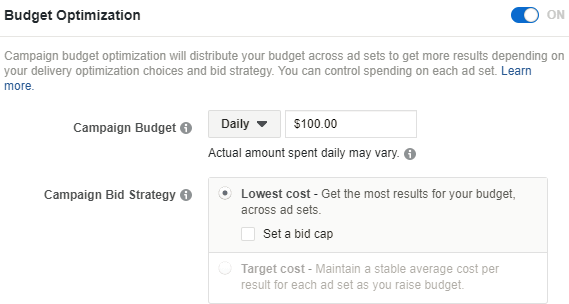Digital Media Practice Lead - Paid Social
Is hyper-segmentation ending on Facebook?
Digital Media Practice Lead - Paid Social
In a world where everything is increasingly segmented and specialized, the media campaigns that we manage on the various platforms are not unrelated to this phenomenon of hyper segmentation.
In a blog post from February 2017 , I highlighted the benefits of segmenting and isolating several targeting elements in Facebook campaigns: mobile VS Desktop, Newsfeed VS Right Side, days, time slots, etc.
But now a new trend is appearing on Facebook: reducing the structure of campaigns on the platform and thus allowing Facebook's algorithm to optimize with as much data as possible. In a few words: let Facebook do the work!
In the end, is it possible to arrive at a very simple equation: Macro > Micro?!

After several tests on our campaigns, discussions with friends at Facebook, here is a new simplified structure to try with your Facebook campaigns:
1 CAMPAIGN – PER REGION AND/OR PER LANGUAGE
3 AD SETS PER CAMPAIGN
1 – Remarketing – aggregate customer lists and audiences from different sections of your site.
2 – Interests – group the different interests within the same ad set.
3 – Look Alike – group them all together. Look Alike from your best customers, your best salespeople, your newsletter subscribers, etc.
The algorithm will be able to identify users who best meet the campaign objective, and thus generate better results. This change will therefore lead to more clicks, more engagement, more conversions, more video views, resulting in a better quality index and a lower cost per click (CPC) or cost per thousand (CPM).
FOLLOWING THE ANALYSIS OF VARIOUS FACEBOOK CAMPAIGNS THAT WE MANAGED IN 2017, HERE ARE SOME FINDINGS:
1 – The main danger of hyper-segmented campaigns is to subdivide to such an extent that the reach becomes almost zero, which causes several problems: investments below forecasts, a higher CPC, too much frequency, etc.
2 – On some of our tests, hyper-segmented ad groups offer costs per click (CPC) 2 to 3 times higher than larger ad groups.
3 – Click-through rates (CTR) are generally lower in hyper-segmented groups than in larger groups, which negatively affects the quality index.
4 – Simplified campaign structures require less time to go live and day-to-day management, and offer more time to think about new strategies to put in place, try new settings and test new creatives.
5 – We get reliable data much faster, making it easier and faster to make decisions.
FOLLOWING THESE OBSERVATIONS, HERE ARE SOME RECOMMENDATIONS:
1 – Test the macro segmentation. On Facebook as on all platforms, you must always be in test mode. This does not mean abandoning your current strategy, but testing alongside it! For example, among your campaigns, select a region or product where you can try out new settings. Make sure you have enough data for the test to be meaningful.
2 – Test the budget allocation at the campaign level. In the same #macro line, Facebook now offers the possibility of setting budgets at the campaign level. The main advantage is to obtain the budgets allocated according to the performance of your ad sets. This therefore reduces manual intervention and budget micro-management.

3 – Test macro-segmentation on other platforms! The idea is the same: reduce day-to-day management, test more, and get more data in less time.
In conclusion, macro-segmented Facebook campaigns can generate more data faster, saving you some time to think, conduct some tests and ultimately, help you generate better results.
Of course, there’s no need for drastic change. Run a few tests and when the results are conclusive, make a move!
Facebook now, tomorrow the world!










